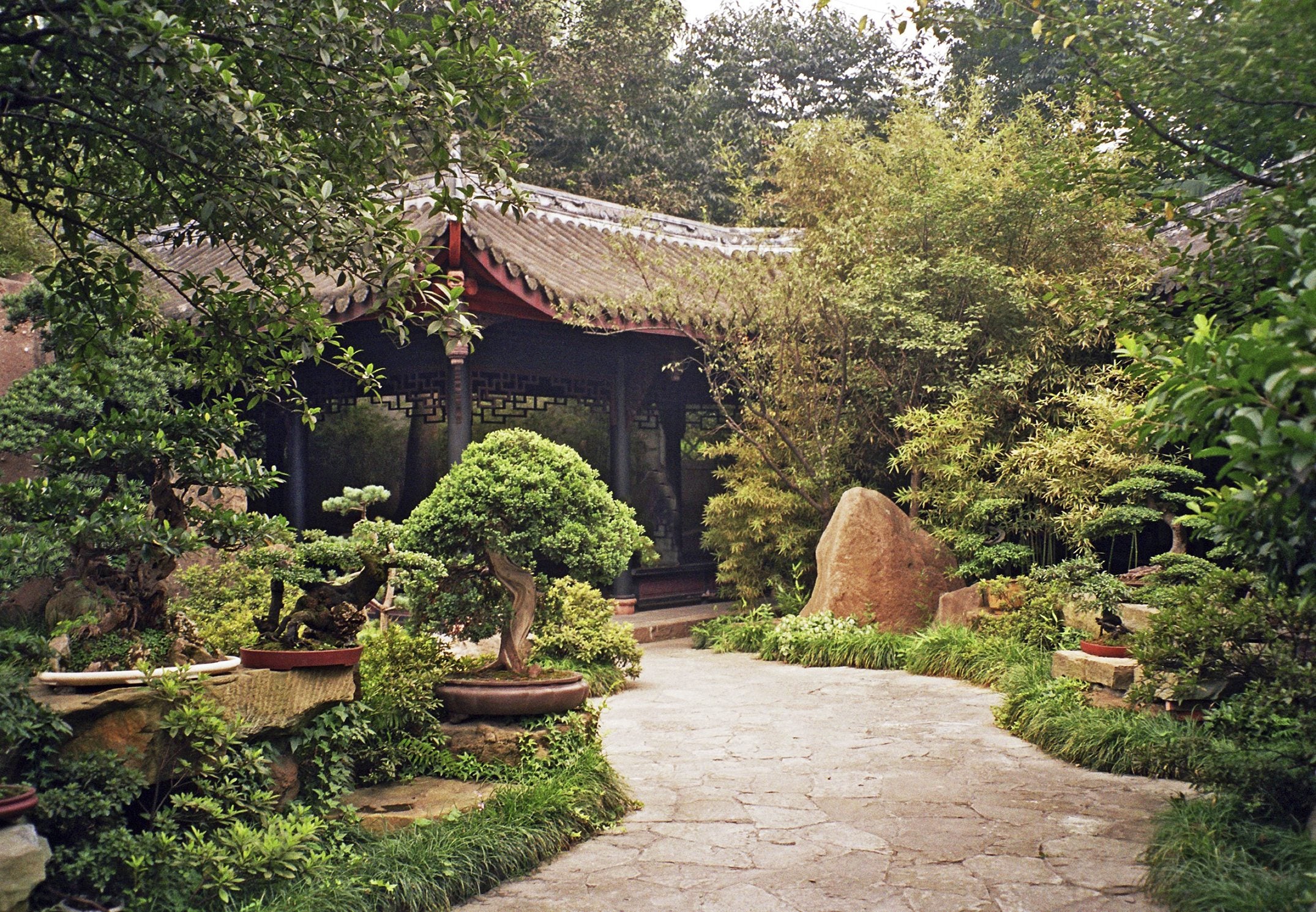Chinese Garden Design: Tips For Creating Chinese Gardens


A Chinese garden is a place of beauty, serenity, and a spiritual connection with nature that provides busy people with much-needed respite from a noisy, stressful world. It isn't difficult to understand the ever-increasing interest in this ancient art form. Let's learn more about how to create a Chinese garden of your own.
Chinese Garden Design
Three major elements of a Chinese garden traditionally include:
- Water - representing living, constantly changing nature
- Stones - indicating stability and strength
- Plants - which provide beauty, texture, and meaning
Architecture such as pavilions and teahouses provide a place for reflection, conversation, and refreshments.
Chinese Garden Plants
Chinese gardens contain a variety of plants chosen to provide beauty for each season. Chinese garden plants may include trees, shrubs, perennials, annuals, and aquatic plants. Bonsai plants are also common. Bamboo is an important plant that symbolizes flexibility. Similarly, pine trees represent endurance and lotus symbolizes purity. Other plants often found in a typical Chinese garden include:
However, plants are often chosen for their form, balance, and texture rather than showy blooms or bright colors. Every plant is carefully chosen for its beauty and meaning.
How to Create a Chinese Garden
Creating Chinese gardens isn't all that difficult to do. Select a space for your Chinese garden, then make a sketch of your plans. Your garden should be compact, asymmetrical, and pleasing to the eye. Clear existing vegetation and create a water feature, such as a pond or stream, which is often the focal point of a Chinese garden. Plant a stand of bamboo, but be sure to steer clear of invasive varieties, which can overtake your carefully planned Chinese garden. Select other plants that will provide color and texture for each season. Other features may include shapes that refer to elements in nature, such as a curved walkway. If possible, provide an architectural element such as an artificial mountain with a pavilion. Many Chinese gardens are enclosed by walls.
Chinese vs. Japanese Gardens
Japanese gardens were initially influenced by Chinese gardens, and both are peaceful, tranquil places to connect with nature. However, the two styles have several differences.
Gardening tips, videos, info and more delivered right to your inbox!
Sign up for the Gardening Know How newsletter today and receive a free copy of our e-book "How to Grow Delicious Tomatoes".
- Chinese gardens are usually designed around an elaborate, decorative building that occupies a relatively large area of the garden.
- The buildings are placed above or adjacent to a pond or other body of water. While Japanese gardens also contain buildings, the buildings are simple, lack elaborate ornamentation, and are often partially or fully hidden from view.
- Although rocks are elements in both styles, Chinese gardens often feature stones as a dramatic focal point. Japanese gardens generally use smaller, more naturally appearing rock features.

A Credentialed Garden Writer, Mary H. Dyer was with Gardening Know How in the very beginning, publishing articles as early as 2007.
-
 Looking For Plants To Give You The Soft And Fuzzies? Try These 5 Fuzzy Leaf Plant Options
Looking For Plants To Give You The Soft And Fuzzies? Try These 5 Fuzzy Leaf Plant OptionsLovers of texture, drama, silver foliage and tactile plants will adore these special sensory garden additions. These fuzzy leaf plant options will leave you all aglow
By Susan Albert
-
 Get Ready For A Summer Of Hummers! Grow These Full Sun Hummingbird Plants and Flowers
Get Ready For A Summer Of Hummers! Grow These Full Sun Hummingbird Plants and FlowersIf you’re lucky enough to enjoy a sunny backyard, make sure you are maxing out on your pollinator opportunities and grow these full sun hummingbird plants and flowers
By Tonya Barnett